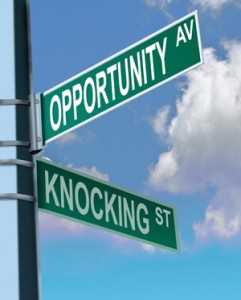
Two key demographics in housing are facing some challenges, but both present huge opportunities for agents.
By Peter Ricci
Every week, it seems new analysts and business firms jump on the housing recovery bandwagon, calling the bottom for the embattled industry and looking forward to a brighter future.
As housing moves forward, though, there are still some troubled sectors of the industry, and how they respond to the housing recovery will shape how housing changes in the coming years. A couple of recent studies have highlighted two particularly important segments: the elderly and students.
According to the American Association of Retired Persons (AARP), older Americans are facing some difficulties with foreclosures and negative equity. A total of 3.5 million individuals who are older than 50 are underwater on their home loans, 625,000 are seriously delinquent and 600,000 are delinquent, the association stated. The seriously delinquent stat was a 456 percent spike from five years ago, and as the AP reported, serious delinquencies have increased at a greater rate for older Americans than younger Americans, a reversal of historical trends.
But it’s also not all sunshine and buttercups for younger Americans as new revelations on student loans have thrusted that topic back into the news cycles. According to MSNBC, private student loans, which swelled to more than $20 billion in 2008, are defaulting at an increasing rate, and currently, $8 billion in private loans, or 850,000 distinct loans, have defaulted. And as we’ve reported before, when students graduate with substantial debts, it can make securing home loans tricky.
Those stats may seems grim, but if the last few years have taught us anything, it’s that we need to look at those numbers not as reminders of a tough market, but as opportunities for new, innovative approaches to a changing marketplace.
An excellent piece on The Commercial Appeal, for instance, highlighted many of the changes currently taking place in real estate, changes that sync rather perfectly with the data we just cited. A few examples:
- Between 1990 and 2010, baby boomers accounted for 80 percent of new-home demand, and the trend was always for larger, more expensive homes.
- Since the housing bubble burst, though, that trend has reversed itself, and those boomers are downsizing to smaller residences.
- Along with home sizes, the types of homes are also changing, and radically. Between 1990 and 2010, single-family homes made up 80 percent of new-housing demand in the U.S., but from 2010 to 2030, it’s expected that multifamily housing will make up 80 percent of demand, and single-family homes just 12 percent.
And that is where those earlier statistics play a part. Older homeowners are downsizing from their boom-era mansions and new professionals straight out of school do not have access to the finances to inhabit those big houses (or have no desire to buy them), so they’re both trending towards smaller, more economic living spaces in larger, multifamily buildings.
And as agents, it will be your job to service them as they make that transition!